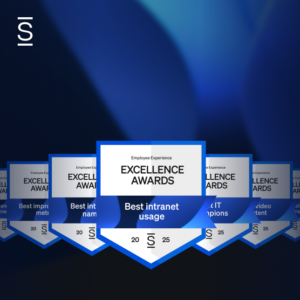Trust is currency in organizations. At a time when remote work is more common than not, change is the only constant, and retaining talent is a top priority for many employers — transparent leadership is key. Leaders who are transparent stand out. They lead the way for stronger teams, resilient cultures and ongoing success.
In this article, we explore how openness, honesty and authentic communication can redefine the dynamics between leaders and their teams. And how transparency fosters an environment where trust thrives, bull$hit is at a minimum, innovation flourishes, and collective goals are genuinely understood and embraced. And we look at how technology, like a modern intranet, can be a catalyst in creating transparency in the digital workplace.
What is transparent leadership?
Think of the leaders you trust. You likely trust them because they approach communication authentically. They lead with empathy and openness. When leaders do this, it often fosters trust within their teams and minimizes uncertainty. Building a “trust bank” is crucial for effective leadership as it can lead to better team cohesion, increased motivation and more effective collaboration.
When leaders share how they landed on certain decisions, it allows their employees a chance to gain important context.
Transparent leadership doesn’t mean that your leader has all the answers. It also doesn’t mean they can share every nuance of a decision. However, it does mean that they explain the why behind decisions and information. It also means that those leaders embrace employee feedback, and prioritize getting their team on the same page.
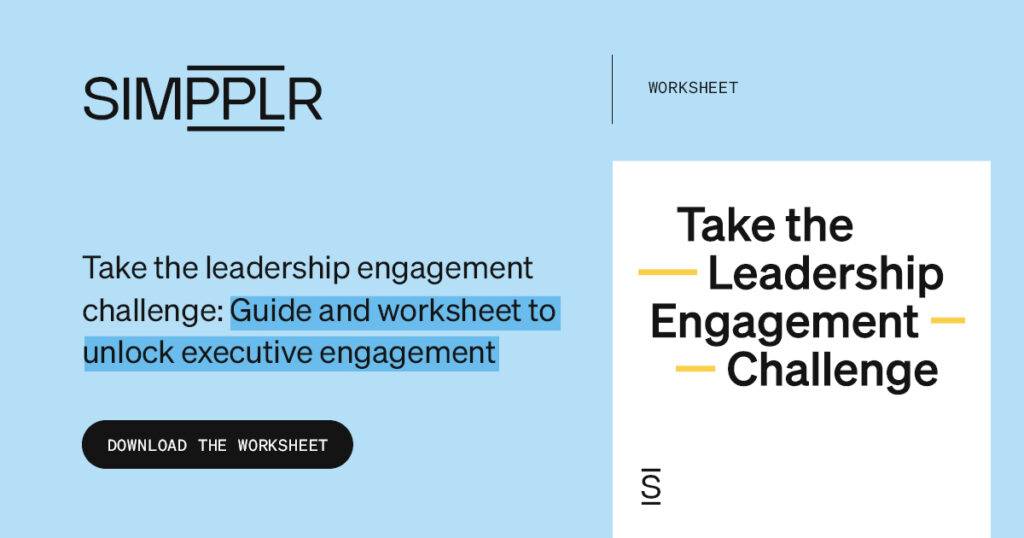
Examples of transparent leadership
You know the leaders I’m talking about. Those who are available and never shy away from a good Q&A session. They proactively communicate the company’s objectives, hurdles and future strategies. With them, you not only feel informed about the victories but also the setbacks.
Or a leader who is approachable. They aren’t afraid to get their hands dirty. They won’t ask you to do anything that they wouldn’t do themself. As Adam Grant said in his book, Think Again, “It’s not psychological safety if people can only voice what you want to hear. The goal is not to be comfortable. It’s to create a climate where people can speak up without fear. Psychological safety begins with admitting our own mistakes and welcoming criticism from others.”
Context is a critical part of transparent communication. It’s easy for leaders, immersed in information, to overlook that others within the organization might not have the same level of insight (and access). So when they take the time to share that context with their employees, they cultivate trust.
Why is trust in leadership critical to success?
I was recently helping my daughter create her Halloween costume. And work inspiration must hit anywhere because the hot glue gun sparked a thought: Trust, in many ways, serves as a glue for teams. It promotes collaboration and propels standout performance. Its significance to success cannot be understated. People who trust their leadership are more innovative, take more risks, and have more loyalty to the overall organization.
According to a study from Google’s Project Aristotle, which sought to identify the dynamics of successful teams, psychological safety — the ability of team members to take risks without fear of punishment — was the top factor determining team success. Trust in leadership is a major contributor to this psychological safety. When employees trust their leaders, they’re more likely to take risks, often leading to innovative ideas and solutions.
The 2017 Edelman Trust Barometer, which surveyed more than 33,000 respondents from 28 countries, found that trust is one of the main factors influencing employee engagement and loyalty. The survey found that one in three employees don’t trust their employer. Among those who do, they are more likely to advocate for the organization, stay loyal to the company, and be engaged in their work.
Direction and vision
Trustworthy leaders articulate a clear direction and a compelling vision for their teams or organizations. When employees trust their leaders, they are more likely to buy into the goals and vision set forth by those leaders. This shared sense of purpose helps align efforts towards a common objective, leading to greater success.
Open communication
Trust begets trust. The reciprocal and reinforcing nature of trust in relationships and interactions encourages open and honest communication. When employees believe that their leaders have their best interests at heart and will listen to their concerns, they are more likely to share valuable feedback and ideas. This open dialogue promotes innovation, problem-solving and continuous improvement, all of which contribute to success.
Employee engagement and motivation
Trustworthy leaders create a positive and motivating work environment.
Employees are more engaged when they feel valued, respected and trusted by their leaders.
When leaders trust their employees’ capabilities, employees are empowered to take ownership of their work, leading to increased motivation and productivity.
Employee retention and loyalty
Employees are more likely to stay with an organization when they trust their leaders. Building trust in the workplace fosters a sense of loyalty and commitment. When leaders prioritize their employees’ well-being and growth, employees are less likely to seek opportunities elsewhere, reducing employee turnover and the associated costs.
Adaptability and resilience
In times of change or crisis, trust in leadership becomes even more crucial.
Trustworthy leaders are better positioned to guide their teams through uncertain situations.
When employees trust their leaders, they are more likely to embrace change, follow new strategies, and remain resilient during challenges.
Ethical behavior
Trustworthy leaders demonstrate ethical behavior and integrity in their decision-making. When leaders consistently act with integrity, employees are more likely to respect and emulate those behaviors. This contributes to a culture of honesty and transparency, essential for long-term success.
Collaboration and teamwork
Trust fosters collaboration and teamwork within an organization. When individuals trust their leaders and colleagues, they are more willing to share information, support each other, and work together effectively. This collaborative environment enhances creativity and problem-solving, driving success.
Risk-taking
In innovative and competitive environments, organizations need to take calculated risks. Trustworthy leaders create an atmosphere where employees feel safe taking risks and proposing new ideas. When employees trust that their leaders won’t punish failure but will instead support learning and growth, they are more likely to explore new opportunities.
Customer confidence
This is where EX meets CX. For businesses, trust in leadership extends to trust from customers and stakeholders.
Trustworthy leadership establishes a positive reputation for the organization, leading to increased customer confidence, stronger relationships and improved brand perception.
Trust in leadership, which grows from leadership transparency, forms the foundation for a positive, productive and harmonious work environment. And it enables effective communication, empowers employees, drives engagement and motivation, and ultimately contributes to an organization’s overall success and sustainability.
Impact of distrust in leadership
“Silence is not brave leadership, and silence is not a component of brave cultures.” ~ Brené Brown, Dare to Lead
It’s important to note that lack of trust in leadership, the primary result of a lack in transparency, can lead to numerous challenges, including:
Reduced employee engagement: Employees who distrust leadership are less likely to be engaged in their tasks or committed to organizational goals.
Increased employee turnover: Mistrust can prompt employees to seek employment elsewhere, leading to high turnover costs.
Impaired innovation: A trust deficit hinders open dialogue, leading to fewer innovative ideas or solutions.
Poor communication: When trust is lacking, communication tends to break down. Employees may withhold information or be hesitant to express their thoughts and concerns. This lack of transparent or ineffective communication can lead to misunderstandings, misinformation and general confusion within the organization.
Resistance to change: Trust is crucial during periods of change or transformation.
Without trust in leadership, employees are more likely to resist change initiatives.
They may perceive changes as being driven by hidden agendas or as potentially detrimental to their well-being, causing resistance that can impede progress and hinder adaptation.
Low morale: Employees who do not trust their leaders often experience low morale. They might feel undervalued, overlooked or even manipulated by leadership decisions. This sense of disillusionment can lead to a negative atmosphere, affecting teamwork and overall job satisfaction.
Lack of collaboration: Trust is the foundation of effective collaboration. Without trust, employees may be reluctant to collaborate with colleagues, departments or even external partners. This lack of collaboration can stifle cross-functional projects, hinder knowledge sharing, and limit the organization’s ability to leverage collective expertise.
Stagnation: A lack of trust can result in a stagnant work environment. When employees feel that their ideas and contributions are not valued, they are less likely to invest effort in seeking improvements or suggesting changes. This stagnation can hinder growth, innovation and progress.
Ineffective feedback loops: Constructive feedback is essential for personal and professional development. However, without trust in leadership, employees might hesitate to provide honest feedback to their superiors. This lack of feedback can hinder the improvement of processes, products and individual performance.
Conflict escalation: Trust serves as a buffer against conflicts escalating into larger issues. In an environment of mistrust, conflicts are more likely to escalate as individuals might not believe that their concerns will be fairly addressed. This can lead to a toxic cycle of unresolved disputes and tension.
Diminished organizational reputation: A lack of trust can tarnish an organization’s reputation. Negative perceptions about leadership can spread internally among employees and externally to customers, partners and investors. This can impact the organization’s credibility and attractiveness as a business partner or employer.
Decreased employee well-being: Trust in leadership contributes to a positive work culture that values employee well-being. Without this trust, employees might experience higher levels of stress, burnout and job dissatisfaction, ultimately affecting their overall health and work-life balance.
Establishing and nurturing trust is essential to mitigate these challenges and foster a thriving, successful and resilient workplace. In fact, a Watson Wyatt study showed that high-trust companies outperform their low-trust counterparts by nearly three times in total return to shareholders – 286%.
How can transparent communication heal the trust rift?
Open communication is the bedrock upon which trust is built. The examples of transparent leadership above all include an element of transparent communication — a leadership communication style that contributes to success in many ways.
Transparent communication helps in:
Setting clear expectations: When employees know what’s expected of them, they’re more likely to perform at their best.
Sharing vision and direction: Understanding the larger picture and the role they play fosters commitment and alignment.
Addressing concerns: Actively addressing employee concerns demonstrates care, which, in turn, nurtures trust.
Providing context: Transparent communication goes beyond just sharing information; it provides context. When leaders explain the reasoning behind decisions, employees gain insight into the broader context of their work. This context helps employees see the bigger picture and understand how their contributions fit into the organization’s goals, fostering a sense of purpose and connection.
Building credibility: Consistent, honest and accurate communication builds credibility over time. When leaders consistently provide reliable information and deliver on their promises, employees are more likely to trust their words and actions.
Credibility is a cornerstone of trust in leadership.
Acknowledging mistakes: Leaders who openly acknowledge their mistakes and take responsibility for them demonstrate humility and authenticity. This willingness to admit imperfections can actually enhance trust, as employees see leaders as human and honest rather than infallible figures.
Feedback and recognition: Communication involves top-down information sharing and two-way dialogue. Leaders who actively seek feedback and recognize employee contributions create an environment of inclusivity and mutual respect. This engagement fosters a sense of value and trust among employees.
Empathy and active listening: Effective communication involves empathetic listening. Leaders who genuinely listen to their employees’ concerns, acknowledge their feelings, and respond thoughtfully show that they care about their well-being. This empathetic approach nurtures trust and a sense of being understood.
Consistency in communication: Trust is built over time through consistent behaviors and communication. Leaders who consistently communicate their values, expectations and decisions establish a reliable foundation for trust. Inconsistent messaging, on the other hand, can lead to confusion and erode trust.
Transparency in decision-making: Sharing insights into decision-making, including the factors considered and the rationale behind choices, enhances transparency. This transparency helps employees see that decisions are based on careful consideration rather than arbitrary or biased reasons.
Conflict resolution: Effective communication is instrumental in resolving conflicts. Leaders who facilitate open discussions to address conflicts and concerns ensure that issues are tackled transparently and fairly. This approach demonstrates a commitment to fairness and a willingness to create a harmonious work environment.
Celebrating achievements: Sharing and celebrating successes, both big and small, fosters a positive atmosphere. Leaders who communicate achievements and give credit where it’s due promote a culture of appreciation and collaboration, strengthening trust within the team.
All in all, transparent communication plays a pivotal role in healing the trust rift by creating an environment of openness, understanding and mutual respect. Through clear and empathetic communication, leaders can bridge the trust gap — restoring faith in their leadership and fostering a culture of trust that propels the organization forward.
Learn more about how transparent communication can bridge the trust gap
How can a modern intranet foster transparent leadership?
A modern intranet is a hub for sharing information, collaborating, recognizing achievements, breaking down silos, and creating a culture of connectedness and belonging. This vital tool empowers leaders to engage with their teams wherever they are, using a variety of media to communicate with employees in the way that resonates best.
A transparent leader is an engaged leader — and research shows that engaged executives have a measurable impact on revenue and employee happiness and retention. Gallup found that organizations with highly engaged employees see an average of 21% higher profitability. And companies with high levels of executive engagement have up to 59% more engaged employees. A report by WTW indicated that companies with leaders who actively communicate and engage with their employees are four times more likely to have high levels of employee engagement. And a study by Weber Shandwick found that in companies where executives maintain a visible presence, employees are 1.6 times more likely to stay committed to the organization and its goals.
A modern intranet can significantly enhance internal communication by serving as a versatile platform for transparent dialogue, efficient information dissemination, and effective feedback collection. It fosters transparent leadership by:
Facilitating open communication
An intranet provides a central hub where leaders can share important updates, company news and strategic visions. This enables real-time and two-way communication across the organization, ensuring that employees are well-informed about key developments. Regular updates from leadership foster a sense of transparency and inclusion, which are essential for building trust and engagement.
Simpplr’s modern intranet simplifies communication from leadership down with help from the new AI-powered smart writing tool, Writing assistant. Through a user-friendly interface, users can determine the tone, format and intent of the content, effortlessly integrating any relevant company values.
Example: Vision, mission and values content linked to Simpplr’s all-company site

With a modern intranet like Simpplr, leaders also can easily share important information via newsletters to employees — reaching them whether they are on mobile, desktop, Slack, Teams or SMS. This tool makes it simple to design, personalize and send branded newsletters using drag-and-drop blocks that support videos, external links, buttons and images.
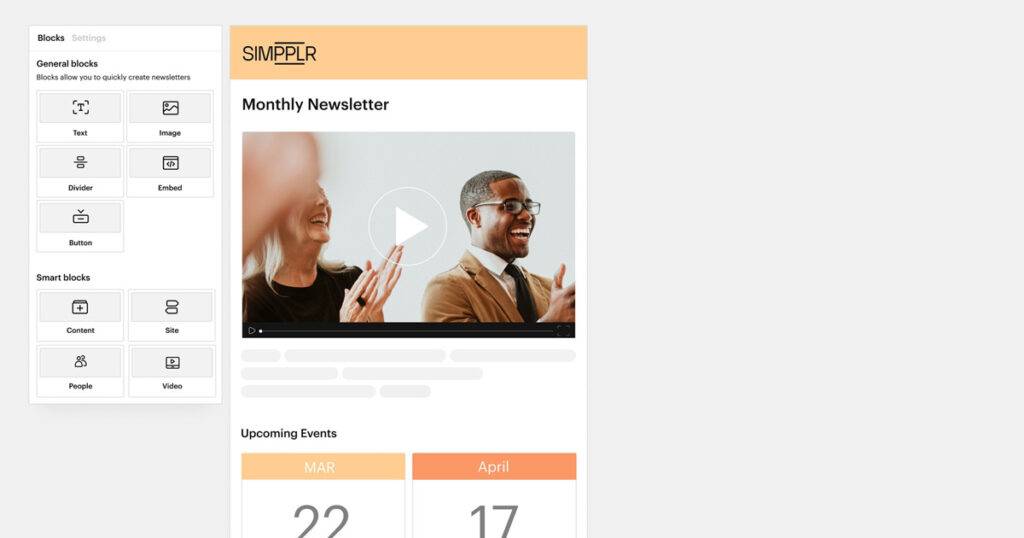
Encouraging consistent recognition
Employee recognition and leadership transparency are intertwined threads that weave a tapestry of a thriving organizational culture. Transparent leaders not only communicate the organization’s goals and strategies but also recognize and celebrate the contributions of their team members openly. By shedding light on individual achievements and acknowledging collective efforts, transparent leaders validate the hard work and dedication of their employees. This recognition becomes a powerful tool for reinforcing positive behaviors and motivating others. Recognizing efforts also fosters a sense of value and belonging, strengthening trust.
Simppr’s Employee Recognition tool enables leaders to make recognition unique to core values. They can customize badges and awards to align with their organization’s values, reinforcing employee efforts that strengthen the culture and the brand.
Example: Simpplr’s Employee Recognition
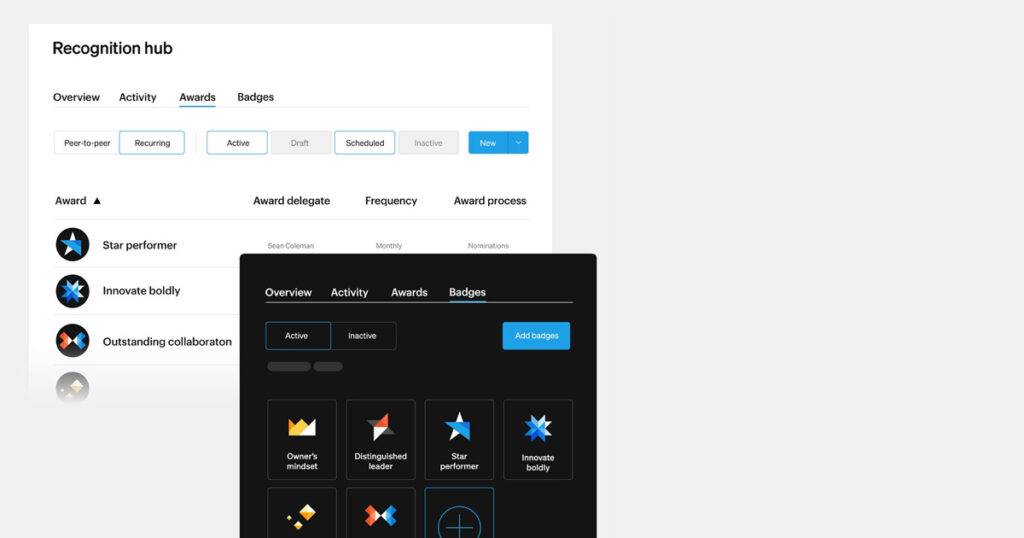
Connecting dispersed teams
In the modern work landscape, where teams may be dispersed across different locations or working remotely, an intranet acts as a virtual bridge. It breaks down geographical barriers and enables seamless communication and collaboration among teams, departments and individuals. Through the intranet, employees can connect with colleagues regardless of physical location, promoting unity and camaraderie. And leaders can engage with employees, wherever they work.
Example: Location site content on Simpplr’s intranet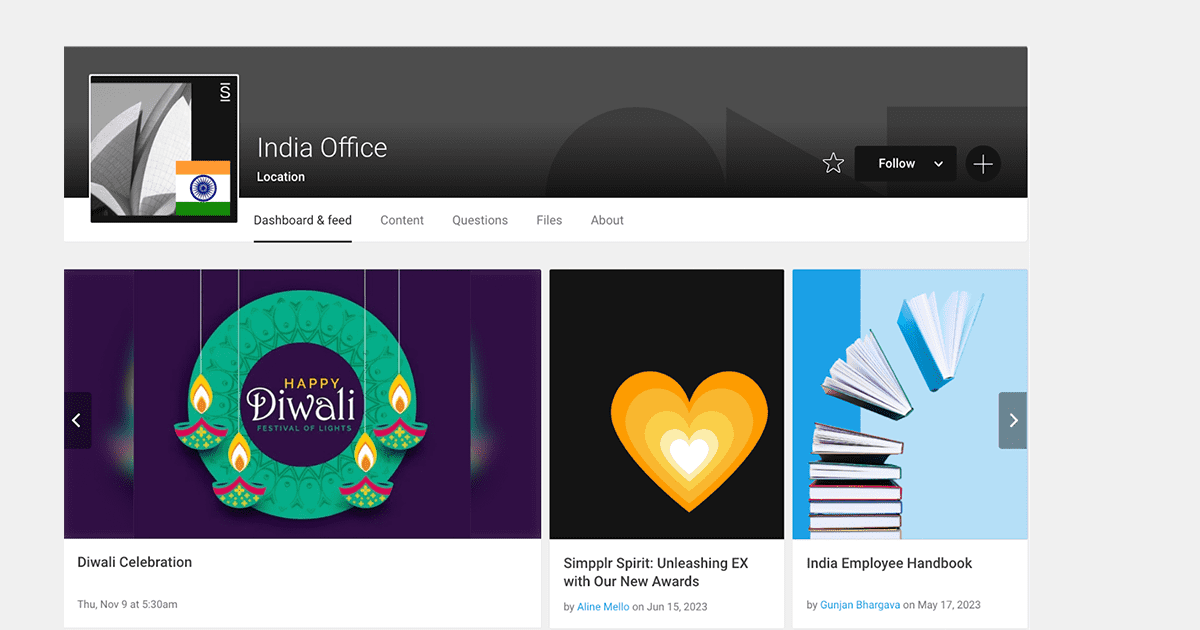
Promoting feedback
A modern intranet includes features such as surveys, polls and discussion forums. These tools allow leaders to gather valuable employee feedback on various topics, from work processes to company culture. This feedback helps leaders make informed decisions and empowers employees by giving them a voice in shaping the organization’s direction. This active engagement can enhance job satisfaction and overall morale.
Simpplr offers employee engagement and pulse surveys as part of the Employee Listening add-on product. This suite of tools is designed to capture a baseline measure of employee satisfaction and provide actionable insights for improving the overall employee experience. AI built into the platform can analyze patterns, trends and responses to surface hidden employee sentiment to help leaders understand attitudes in real-time, enabling the organization to adapt and course-correct as needed.
Centralizing information
An intranet is a centralized repository for essential documents, policies, procedures and resources. Employees can access the information they need quickly and easily, reducing the time spent searching for information through various channels.
Simpplr integrates with the most widely-used content management systems, such as SharePoint, Google Drive, Dropbox, Box and others, so employees don’t have to know which system to go to for what.
This centralization of information improves efficiency and transparency by ensuring that everyone has access to accurate and up-to-date information — using one single search.
Encouraging knowledge sharing
Transparent leadership fosters a culture where employees feel confident to share their knowledge — and a modern intranet makes knowledge sharing a breeze. It provides a platform for employees to share best practices, insights, and expertise across different teams and departments. This collaborative environment promotes learning and innovation, as employees can tap into the organization’s collective knowledge.
Supporting multimedia communication
A modern intranet empowers leaders to share information in various formats, such as videos, images and interactive content. Native video supports video hosting, organization and transcribing. Employees can search keywords and find exactly the time stamp to view, which is extremely helpful for on-demand town hall videos. This capability allows leaders to convey information in engaging and visually appealing ways, capturing employees’ attention and enhancing their understanding of complex topics.
Cultivating a sense of community
Transparent leadership is a cornerstone for building a vibrant sense of community within organizations. By openly sharing information via a modern intranet platform, leaders create an inclusive environment where team members feel valued and informed. Social networking elements enable employees to respond to leadership communications in real-time, sparking virtual conversations that contribute to that sense of unity and belonging.
Tracking communication analytics
Many modern intranets are equipped with analytics capabilities that track user engagement and interaction with various communication elements. This data can help leaders understand which messages are resonating with employees, enabling them to refine their communication strategies over time.
For example, Simpplr’s Employee Listening combines survey responses with AI-powered passive listening to detect underlying sentiments and emotions — helping leaders identify pain points. Leaders gain insights into a broad range of sentiment data gathered throughout the Simpplr platform, incorporating polls, pulse and traditional surveys, Sentiment check, Awareness check, and everyday interactions, like comments.
Example: Simpplr’s Employee Listening tool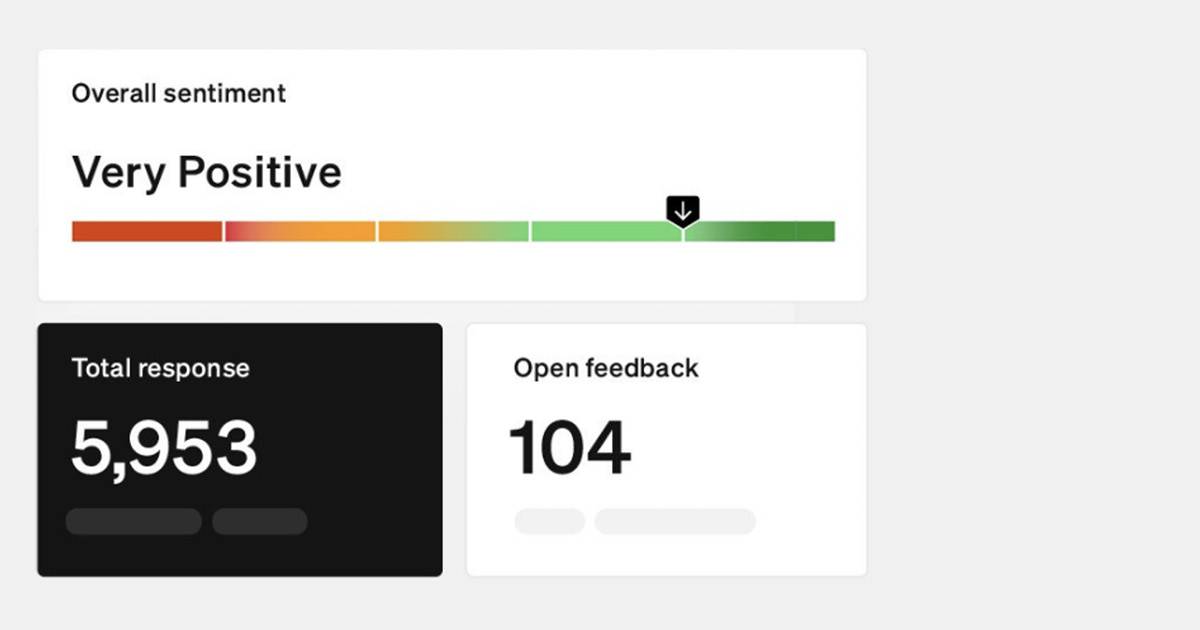
Emergency communication and crisis management
Transparent leadership is perhaps no more critical than in times of crisis. That’s when the right intranet can serve as a reliable channel for delivering timely updates, instructions and safety information to all employees, ensuring that everyone is informed and safe.
Bringing it all together
Transparent leadership is paramount in fostering trust, collaboration and a thriving organizational culture. Leaders who openly share information, communicate decisions, celebrate achievements, and provide insights into their thought processes create an environment where employees feel valued and informed.
In the digital age, a modern intranet acts as a catalyst, facilitating transparent leadership by serving as a centralized hub for communication and information sharing. It becomes the virtual space where leaders can disseminate updates, share strategic visions, and provide real-time feedback. It cultivates a community in the digital workplace, empowering employees to actively participate in shaping their leader’s vision and bringing it to life within the culture.
And a purpose-built intranet like Simpplr encourages open dialogue, making it easier for employees to voice concerns, share ideas, and participate in decision-making processes — wherever and however they work.
Ultimately, by leveraging a modern intranet, organizations can strengthen the bond between leaders and employees, building a culture of trust that propels collective success.
Trusted by over 700 global brands, Simpplr is the most comprehensive intranet platform that delivers a cohesive employee experience — all in one unified platform. Request a demo today to learn more.












